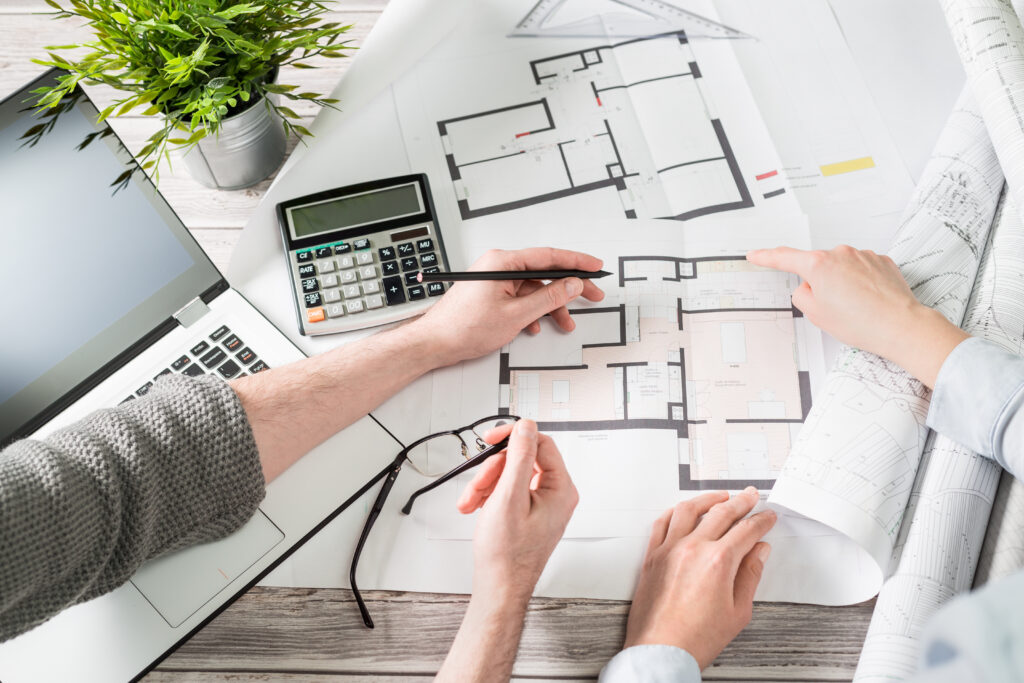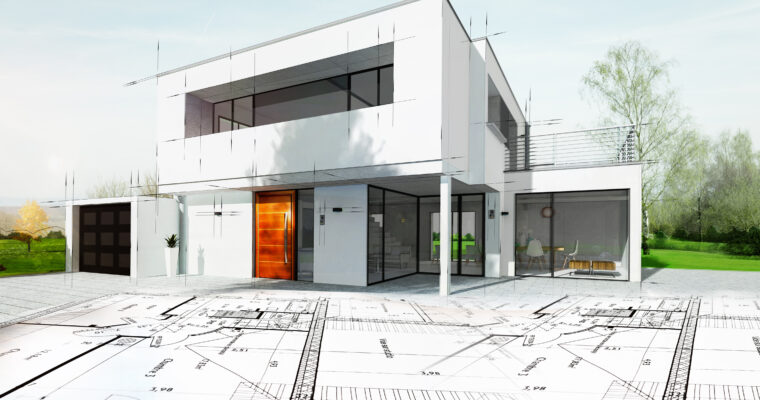How To Design The Perfect House Floor Plan
Planning and designing are the most crucial initial steps in building a house. The construction’s quality heavily depends on detailed plans created by the architect and engineer. However, these first steps always start with the aspiring homeowner’s vision of a dream home.
An excellent house plan goes beyond the elegant exterior and interior finishes on typical house inspirations online. While creating a visually appealing space is thrilling, it also requires thoughtful planning to ensure efficiency, comfort, and safety for full-time living.
A dream home’s features boil down to one’s preferences and needs. To get started, here are fool-proof steps for designing the perfect house plan to fit your lifestyle.
- Choose A Home Style
A house plan starts with a vision. A picture of a perfect home helps in setting your goals and standards. Checking out design collections from residential contractors online is an excellent way to start looking for inspiration. As such, you may visit https://odysseyhomesidaho.com/ or ask a local home developer.
As you browse different house inspirations online, you may encounter designs like the ones below. These are the most popular home style choices in the US:
- Farmhouse: Farmhouse-style homes are straightforward. This design defines homeliness and simplicity, focusing on function above aesthetics. Its exterior is characterized by a wrap-around porch and an asymmetrical shape. In the interior, you’ll be welcomed with rustic wooden elements, making the space cozy.
- Colonial: This traditional two or three-story home style dates back to the US Colonial Era, characterized by a rectangular structure and symmetrical windows. The exterior walls are typically flat and sleek, with minimal texture and details. The interior emphasizes simplicity and elegance with its polished hardwood floors, chic trims and moldings, and light-colored walls.
- Ranch-Style: This style features a classic, one-level floor plan, taking up more lot area than other designs. The exterior is defined by a low-pitched roof and an L-shaped structure with minimal architectural details. Like other traditional designs, its interior celebrates simplicity with natural building materials.
- Mediterranean: Mediterranean-style homes are inspired by historic European architecture, similar to structures of seaside and sun-soaked locations. The exterior is characterized by red or terracotta roof tiles, stucco-finished walls, and arches. On the other hand, its interior has many variations, ranging from basic, functional furnishing to intricately detailed carvings using natural materials.
- Modern: This architecture is defined by sharp lines and asymmetrical geometric shapes. It’s a popular choice among luxury residential structures due to its bespoke exterior, featuring oversized windows and smooth walls. Its interior showcases a spacious, open living space, perfect for gatherings. For more ideas of retro house plans you should consult with the professionals at French Brothers.
- Contemporary: Contemporary house style isn’t confined by one definition. It embraces fluidity and creativity in design, allowing architects to draw unique plans. Most contemporary interiors combine sleek and sharp lines, asymmetrical shapes, and expansive empty floor and wall space.
- Mid-Century Modern: This home style focuses on blending with its environment. The exterior has a minimal design and emphasizes angular shapes and sharp edges while featuring large windows. Its interior showcases a combination of natural and synthetic materials and color-rich décor.
You can choose a home style from these popular options or combine pivotal elements to create a unique house design.
- Determine The Total Lot And Floor Area
The maximum floor area you can build depends on the lot size. Determining these details is imperative in drawing plans with the help of an architect. However, you may start visualizing the space by measuring your target spot and sketching it on paper.
Specifying the total area would be a great start to drawing an initial floor plan. It helps set the limits on the room numbers and sizes you can fit in. Plus, it makes choosing a perfect house style easier. For instance, you can build a two or three-story modern home to maximize an 18,000 square feet lot while leaving ample outdoor space.

Moreover, determining your preferred total floor area is necessary for preparing your budget. Most contractors give a free rough estimate based on the gross floor area, your preferred house style, and the type of finish.
- Specify The Number Of Rooms And Their Sizes
The number and sizes of rooms significantly affect the functionality and comfort of a home. When designing the perfect floor plan, having a space for everything is a must, no matter how big or small the house is.
The main factors most homeowners consider when building or buying a home is the number of rooms and their sizes. Two or three bedrooms and two bathrooms are standard for a starter home. However, you may need more when designing a family home to guarantee efficiency and comfort.
Aside from bedrooms, specifying the sizes of the common living areas is also crucial. For the kitchen, the standard measure is around 10% to 15% of the gross floor area. Specifically, a 3,000-square-foot home requires a 300 – 450-square-foot kitchen.
For dining and living areas, it’s best to specify the maximum number of persons you want to accommodate. You can also design around existing furniture pieces you wish to incorporate around your home while leaving enough breathing room for smooth traffic and accessibility.
- Prioritize Function And Flow
A home’s layout determines function and traffic flow. One mistake can create an obstruction that may risk efficiency, comfort, and safety. Working with professionals is imperative to avoid this issue.
Prioritizing function and flow involves the proper orientation of furniture pieces, appliances, and doors while leaving enough floor space for foot traffic. It also includes leaving enough clearance for opening cabinet doors and drawers, especially for busy rooms like the kitchen.
Plumbing and electrical are also crucial to guarantee function and good flow. For instance, placing the rooms requiring water supply and drainage next to each other is design and cost-efficient. The placement of outlets and switches is also vital to safety and convenience.
- Create Efficient Storage Spaces
Lack of storage is a common challenge among homeowners due to poor planning. A proper furniture layout, orientation, and intricate designs aren’t enough to make a perfectly functional home. You must also include designated spaces for storage.
Storage is the key to a clutter-free home. Once you move in, you may slowly accumulate more possessions than expected, ranging from bulky furniture pieces and appliances to small miscellaneous items. It’s best to prepare accessible storage to keep your house organized.
- Consider Your Lifestyle
The perfect house plan’s foundation is your lifestyle. A home should accommodate all your needs and wants to live comfortably and happily. It’s a safe and functional space for doing what you love.
One common planning mistake among aspiring homeowners is designing based on trends. While this may be the easiest way to build a beautiful home, issues may arise once you move in. Therefore, you must picture yourself or your family living in that house and create a checklist of your non-negotiables. Planning a home from scratch gives you limitless flexibility on what special features to add.
- Maximize The Outdoors
Maximizing the outdoors is an effective way to expand your home’s living space. Planning a house doesn’t end with the interior layout and design. It also includes effective utilization of the property’s environment and location.
One way to maximize the outdoors is to build a porch or patio. Creating the best hangout space for summer makes you enjoy being at home. Depending on the climate, available yard space, and budget, you may also include an outdoor pool and a garden in your house plan.
Another trick to maximize your outdoor is to install large windows, especially if your property faces scenic views like mountains, forests, a beach, or the city skyline. You may also include a balcony or deck to enjoy the landscape.
- Utilize Natural Light
Natural light is vital to a perfect house plan. Sunlight plays a significant role in a home’s design, comfort, and energy efficiency. That is why architects prioritize the proper orientation of windows.
One way to effectively utilize natural light when designing a home is by placing large windows, especially in the main living spaces. Doing so will make your interiors more expansive, open, and vibrant. Plus, you can save on heating costs and lighting during the daytime.
- Future-Proof It
A future-proof house plan is a smart design choice for aspiring homeowners. It involves features that allow the home to grow with you or your family. It’s also best for building a safe space for your retirement.
One future-proofing tip for constructing a starter family home is designing a safe and secure interior for toddlers and kids. Installing electrical outlets with shutters, avoiding furniture with sharp edges, and choosing carpet floors for children’s bedrooms are some of the best examples.
On the other hand, planning a house for retirement requires different features. A single-story layout and integrated smart home devices are crucial for comfort and safety. Details like shower seats, heated bathroom floors, and handrails around the home are also essential.
- Hire Professionals
Hiring a team of reliable professionals to plan and design your home is a must since they know the best practices to guarantee efficient results. Plus, they follow the standards based on your local building code.
Working with expert designers and builders removes the hassle and headache when planning a home. Since they have the skills and expertise in home construction, they can provide the best services to meet your expectations.
Conclusion
Designing the perfect house plan is the first step to actualizing your dream home. Following these practical tips can make tedious planning more manageable.







0